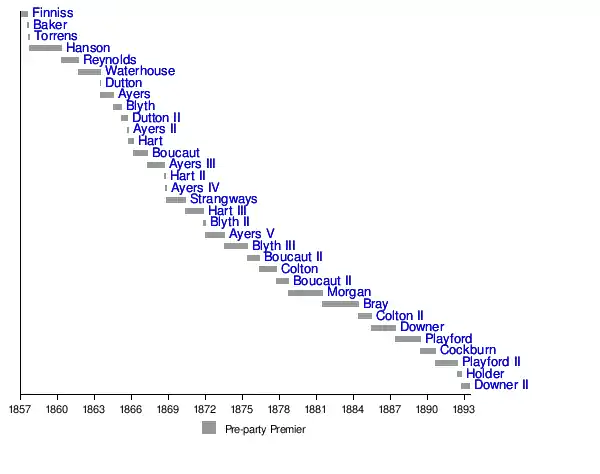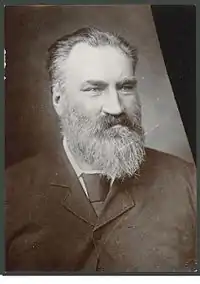1890 South Australian colonial election
Colonial elections were held in South Australia from 9 April to 23 April 1890.[1][2] All 54 seats in the South Australian House of Assembly were up for election. The incumbent government led by Premier of South Australia John Cockburn defeated the opposition led by Leader of the Opposition Thomas Playford II. Each district elected multiple members, with voters casting multiple votes.
| Party | Votes | % | Swing | Seats | Change | |
| Independent | 66,407 | 100.00 | * | 54 | * | |
| Total | 66,407 | 54 |
| |||||||||||||
All 54 seats in the South Australian House of Assembly 27 seats were needed for a majority | |||||||||||||
|---|---|---|---|---|---|---|---|---|---|---|---|---|---|
| |||||||||||||
| |||||||||||||
Since the inaugural 1857 election, no parties or solid groupings had been formed, which resulted in frequent changes of the Premier. If for any reason the incumbent Premier lost sufficient support through a successful motion of no confidence at any time on the floor of the house, he would tender his resignation to the Governor of South Australia, which would result in interested members declaring their intent to run for the vacant position. A parliamentary ballot would then take place, resulting in the member with the most votes being sworn in by the Governor as the next Premier.
However, from the 1887 election there began a growing informal division between groups of members who were loosely described as ‘conservative’ and ‘radical’ by the press. The ‘conservatives’ found their leaders in John Cox Bray and John William Downer, while the ‘radicals’ were led by John Colton, Thomas Playford and John Cockburn. The leaders often contested government against their reported allies in loose alliances, producing an element of political ‘structure’ which began to see a trend emerge toward increased government stability. The United Labor Party would be formed in 1891, while the National Defence League would be formed later in the same year.

See also
Notes
- "Statistical Record of the Legislature, 1836 to 2009" (PDF). Parliament of South Australia. Archived from the original (PDF) on 2015-03-27. Retrieved 2 February 2016.
- "Balloting for Places". Evening Journal (SECOND EDITION ed.). Adelaide. 13 March 1890. p. 3. Retrieved 2 February 2016 – via National Library of Australia.
.jpg.webp)
